 If you're wondering why the FAA is taking its time approving drones for commercial use, here's a good example. Two separate flights reported near-misses with a drone at John F. Kennedy airport, with one of the pilots saying it came within "several...
If you're wondering why the FAA is taking its time approving drones for commercial use, here's a good example. Two separate flights reported near-misses with a drone at John F. Kennedy airport, with one of the pilots saying it came within "several...
Cooper Griggs
Shared posts
JFK Airport has a drone problem
 If you're wondering why the FAA is taking its time approving drones for commercial use, here's a good example. Two separate flights reported near-misses with a drone at John F. Kennedy airport, with one of the pilots saying it came within "several...
If you're wondering why the FAA is taking its time approving drones for commercial use, here's a good example. Two separate flights reported near-misses with a drone at John F. Kennedy airport, with one of the pilots saying it came within "several...
I got to act all important. #technicolor #clientbadge #lanyard...

I got to act all important.
#technicolor #clientbadge #lanyard #hollywood #losangeles #california #visit (at Technicolor Broadcast Services)
Sunlight through bacon fog #bigbear #trip #lodge #fun #breakfast...

Sunlight through bacon fog
#bigbear #trip #lodge #fun #breakfast #pancakes #bacon #california #light #rays #sunrise (at Big Bear Lake)
laughingsquid: ‘Grandmas Smoking Weed for the First Time’,...
Cooper GriggsLMAO!
"If you wait until you are ready, it is almost certainly too late."
- Seth Godin
Artist Sculpts a Horse from Molten Glass in Under Two Minutes
Cooper Griggsmassive skill
In a period of about 90 seconds, this glass artist transforms a molten blob of glass into a horse using little more than a pair of huge tweezers, gravity, and a lifetime of practice. Not completely sure who the artist is, but the YouTube comments credit Francisco Lopez Serrano. (via Reddit)
Britain's first 'poo bus' hits the streets
Cooper GriggsI hope this isn't another shitty idea.
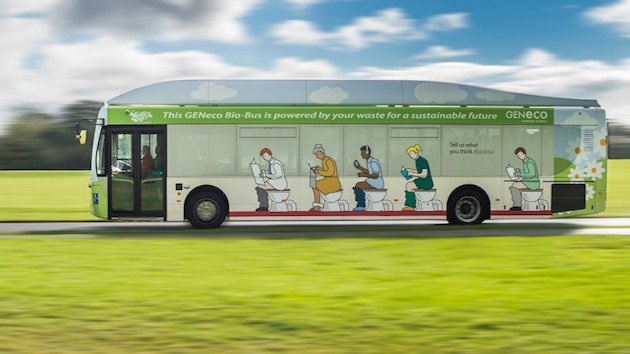 Thanks to a range of new technologies, Britain's buses are steadily swapping traditional fuel for greener alternatives. Over in Bristol, however, Wessex Water believes more can be done with the brown stuff. That's why it's today put the UK's first...
Thanks to a range of new technologies, Britain's buses are steadily swapping traditional fuel for greener alternatives. Over in Bristol, however, Wessex Water believes more can be done with the brown stuff. That's why it's today put the UK's first...
Killer Deal
Cooper Griggswhy not?
Trippy Kinect-powered art disintegrates a man
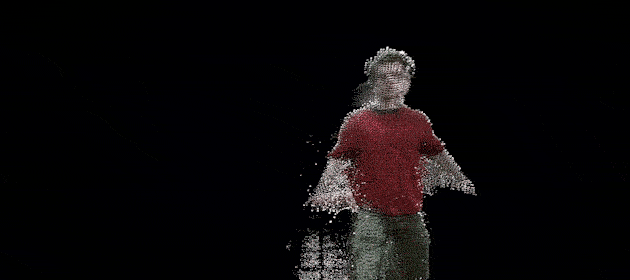 Though many folks are meh on Microsoft's Kinect 2 for gaming, in the hands of a 3D animator it can do wondrous things. Case in point is the Momentum art project from a group called Schnellebuntebilder. Using custom software, they captured a live...
Though many folks are meh on Microsoft's Kinect 2 for gaming, in the hands of a 3D animator it can do wondrous things. Case in point is the Momentum art project from a group called Schnellebuntebilder. Using custom software, they captured a live...
Why Google halted its research into renewable energy
Cooper Griggsvia Burly.Thurr

Back in 2007, Google had a simple idea for addressing global warming — we just need to take existing renewable-energy technologies and keep improving them until they were as cheap as fossil fuels. And, voila! Problem solved.
That was the logic behind the company's RE-C project, which aimed to produce one gigawatt of renewable electricity for less than the price of coal. The hope was to do this within years, not decades. So the company invested in new geothermal drilling R&D and put $168 million toward Brightsource's Ivanpah solar tower in the Mojave Desert.
By 2011, however, Google decided that this energy initiative wasn't going to work out as planned and shut things down. Unlike, say, Google Glass or self-driving cars, Google wasn't interested in this particular moon shot. So what happened?
In a recent long essay at IEEE Spectrum, two Google engineers on the project — Ross Koningstein and David Fork — explain the thinking behind the closure. It's not that Google has given up on renewable energy. (The company still spends many millions of dollars buying wind energy for its servers.) Partly it's that they simply weren't on track to achieve their specific goals.
But, more interestingly, the project also made the engineers realize that their original clean-energy goal wasn't nearly ambitious enough.
'Today's renewable energy technology won't save us'
How did they figure? The two engineers calculated what would happen if Google actually achieved its dream of creating a renewable electricity source (say, geothermal or solar) that was cheaper than coal. A major breakthrough.
That would be a huge deal for climate. More and more electric utilities would switch over to this cleaner source over time. By 2050, the Google engineers' modeling suggested, US carbon-dioxide emissions would be 55 percent lower than what we're currently on pace for.
But they also found that this new technology would still be adopted too slowly to avert significant global warming — in part because the technology wouldn't be cheap enough to displace all the existing coal and gas plants out there that have already been paid for. As a result, the amount of carbon dioxide in the atmosphere would keep rising sharply (the purple line below). And note that this is a best-case scenario for Google's original dream:
Data Sources: "The Impact of Clean Energy Innovation," Google-McKinsey, 2011; "Target Atmospheric CO2: Where Should Humanity Aim?," James Hansen et al., 2008 (IEEE Spectrum)
That's why the two engineers ultimately concluded that "Today's renewable energy technologies won't save us." Clean-energy technology needs to get much, much, much better — not just so that it's competitive with natural gas and coal, but good enough that everyone will readily start switching over within the next 40 years. Here are some rough sample numbers:
Residential customers in the contiguous United States pay from $0.09/kWh to $0.20/kWh, a significant portion of which pays for transmission and distribution costs. And here we see an opportunity for change.
A distributed, dispatchable power source [i.e., something that could be installed anywhere and turned on and off whenever needed] could prompt a switchover if it could undercut those end-user prices, selling electricity for less than $0.09/kWh to $0.20/kWh in local marketplaces. At such prices, the zero-carbon system would simply be the thrifty choice.
Unfortunately, most of today's clean generation sources can't provide power that is both distributed and dispatchable. Solar panels, for example, can be put on every rooftop, but can't provide power if the sun isn't shining. If we invented a distributed, dispatchable power technology, it could transform the energy marketplace and the roles played by utilities and their customers.
So, for example, if we had incredibly cheap solar panels with batteries that could store electricity during cloudy or dark periods and power an entire home for less than current utilities can — well, everyone would rush out to buy them and there'd quickly be little need for existing coal and gas plants. Carbon pollution would drop very, very quickly.
But we're still far from that point. To get there, the new clean energy sources can't just be comparable to fossil fuels. They have to be clearly superior.
Is Google's view too pessimistic?
We're going to need more power. (Sean Gallup/Getty Images)
Now, this view of what it takes to solve global warming might seem overly pessimistic — and perhaps too Silicon Valley-centric — to some. After all, other groups like the Intergovernmental Panel on Climate Change have calculated that we can drastically cut carbon emissions with today's technologies. We'll just likely need to layer on additional policies like carbon taxes, efficiency regulations, subsidies, and so forth.
Here's the rationale for the policy-heavy view: Many clean-energy technologies aren't competitive with coal and gas and oil right now, but that's largely because fossil-fuel plants and cars can emit as much carbon-dioxide as they want without paying for the damage it causes. So what if we had, say, a carbon tax that leveled the field? Or regulations that required older, dirtier power plants to shut down early? Then clean energy would have a leg up.
Koningstein and Fork, for their part, sound pessimistic about policy. They're skeptical that governments around the world are ever going to be able to penalize fossil-fuel usage sufficiently. "Rather than depend on politicians' high ideals to drive change, it's a safer bet to rely on businesses' self interest: in other words, the bottom line." Make clean energy irresistible, and the problem will solve itself.
This harkens back to an old dispute among people thinking about how best to tackle climate change — between those who argue we need major technological revolutions to solve the problem and those who argue that existing technology plus incremental progress plus better efficiency plus the right mix of policy can curtail emissions quickly and drastically. (Obviously it's also possible to believe both things would help, but people seem to enjoy splitting into camps.)
On the question of R&D, Google's engineers ultimately settle for a bit of a hybrid view. They propose that governments and energy companies should consider a 70-20-10 rule of thumb for investing in energy:
The bulk of R&D resources could go to existing energy technologies that industry knows how to build and profitably deploy. These technologies probably won't save us, but they can reduce the scale of the problem that needs fixing. The next 20 percent could be dedicated to cutting-edge technologies that are on the path to economic viability. Most crucially, the final 10 percent could be dedicated to ideas that may seem crazy but might have huge impact.
That's a bit different from the way the US government invests, where upwards of 90 percent of energy R&D goes toward established tech and probably around 0.1 percent goes toward pie-in-the-sky stuff. (Note also that the United States, other governments, and the private sector all spend remarkably little on energy R&D in any case.)
That might not be an entirely satisfying answer — it's partly a hope that something incredible, like cheap fusion power, will come out of that 10 percent. But their essay is a good starting point for thinking about the scale of the problem.
Further reading
Solar power keeps getting cheaper — but not for the reasons you'd expect
How to solve global warming, in 7 steps
Is there a free-market solution to global warming?
Nielsen will finally start tracking Netflix and Amazon video
Cooper GriggsWe need another player in this market.
 Nielsen, the holy vanguard of television ratings, has finally figured out how to track viewership from Netflix and Amazon's streaming video services. And when it launches next month, it could fundamentally change the sorts of shows you see from them....
Nielsen, the holy vanguard of television ratings, has finally figured out how to track viewership from Netflix and Amazon's streaming video services. And when it launches next month, it could fundamentally change the sorts of shows you see from them....
How to Fold the World’s Best Paper Airplane
Back in 2012, former Cal Berkeley quarterback Joe Ayoob broke the Guinness World Record for the longest distance in paper airplane flight using a plane designed and folded by John Collins. In this video, Collins demonstrates how to fold the plane, the Suzanne. Directions for this and several additional planes can be found in his book The New World Champion Paper Airplane Book. (via Kottke)
This is so great I had to share it with you
We can rebuild him.
Cooper Griggs@GN


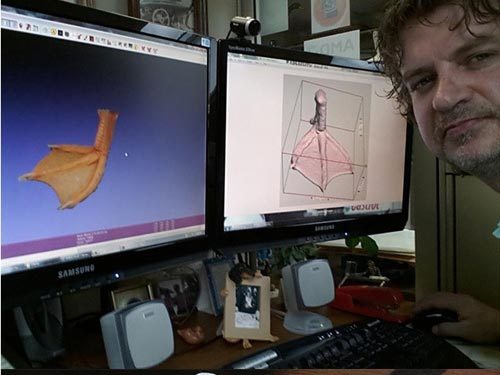

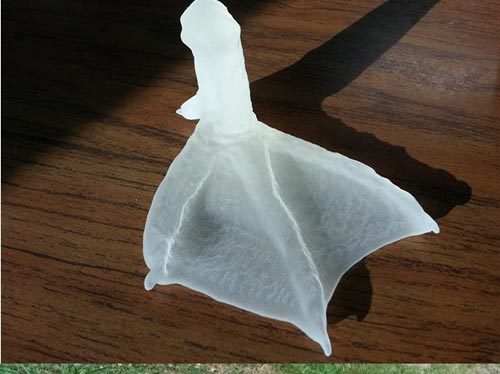




We can rebuild him.
Senators kill bill aimed at ending NSA's mass phone surveillance
Cooper GriggsWho did you elect?
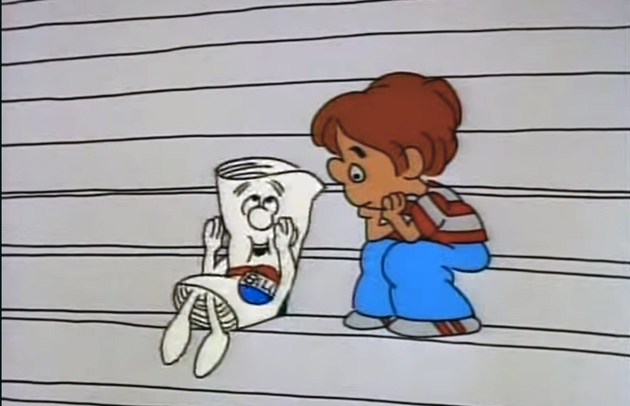 Back in May, the US government began to process a bill aimed at reining in the NSA's powers of surveillance -- if Google, Apple and Microsoft are sending group letters, you know it's an important bill. However, it's been left on Capitol Hill,...
Back in May, the US government began to process a bill aimed at reining in the NSA's powers of surveillance -- if Google, Apple and Microsoft are sending group letters, you know it's an important bill. However, it's been left on Capitol Hill,...














